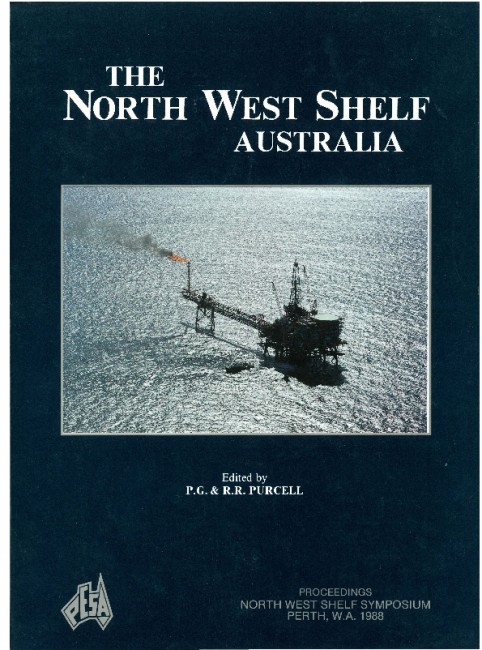Publication Name: The North West Shelf Australia
Authors: P.M. Barber
Date Published: July 1988
Number of Pages: 27
Reference Type: Book Section
Abstract:
Despite the presence of extremely large rotated fault blocks and associated compaction drape closures, drilling of 11 wells on the Exmouth Plateau discovered only non-commercial dry gas accumulations, including the large Scarborough Gas Field. The dearth of liquid hydrocarbons can be directly related to the geomorphic position of the Exmouth Plateau as a platform area ancilliary to the adjoining Barrow-Dampier Jurassic rift system. The classic association of source, reservoir and trap, typical of Jurassic rift systems worldwide, is absent on the Exmouth Plateau; the syn- and post-rift sequences are extremely condensed owing to the positive influence exerted by the plateau throughout Jurassic and Cretaceous time. While the pre-rift sequence is capable of sourcing mainly gas and some minor oil, a post-breakup decrease in geothermal gradient has frozen the peak hydrocarbon generative window within the pre-breakup Triassic section, expulsion having occurred prior to the deposition of Late Jurassic and Cretaceous cap rocks. These have oil and gas- sourcing potential, but are currently immature, except possibly in the southern Kangaroo Trough, a post-breakup downwarp separating the main Exmouth Plateau high from the Barrow-Dampier Rift. The gas accumulations are mostly trapped by fault seal in thin sands, and originated from an overmature source sequence, possibly Permian or Lower Triassic shale, with massive listric faulting providing migration conduits. Using the Exmouth Plateau as an analogue,future oil exploration on platform areas throughout the North West Shelf should proceed with caution, except where mature pre-rift oil-prone source rocks are ensured, with viable post-breakup capping mechanisms; or where long distance lateral hydrocarbon migration can be invoked from 'kitchen' areas in the adjoining Jurassic rift systems.


